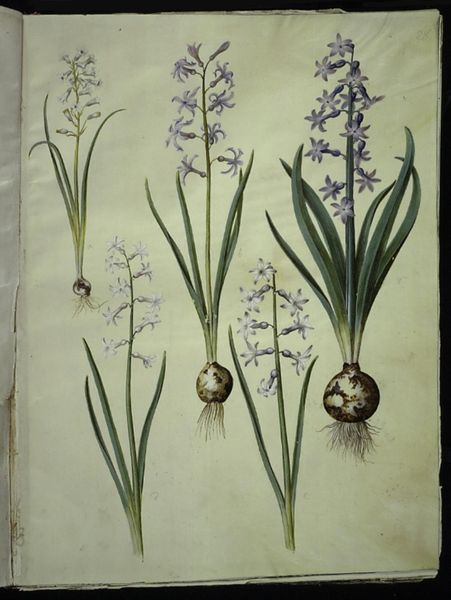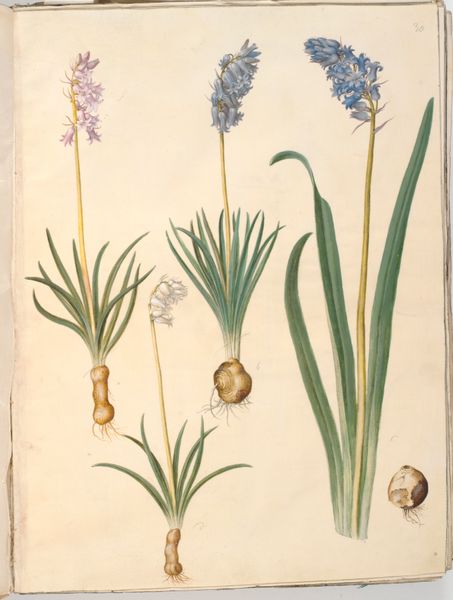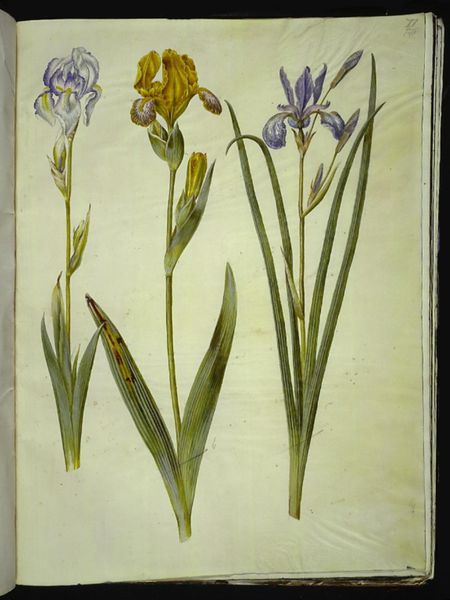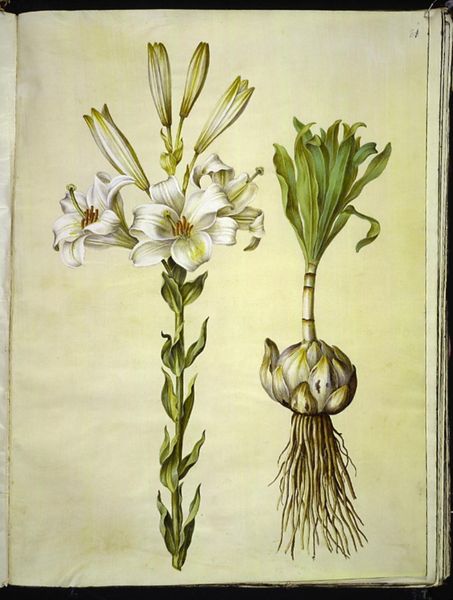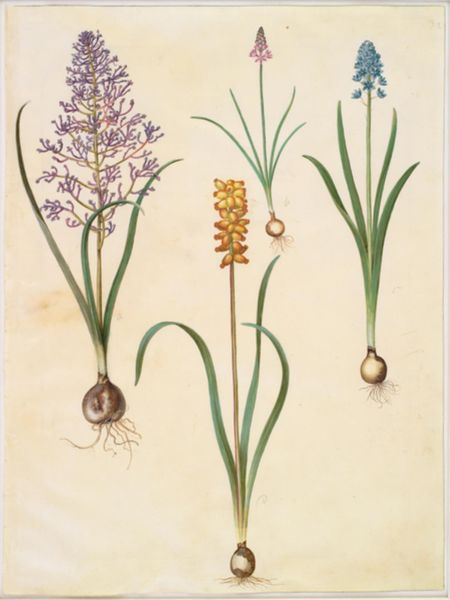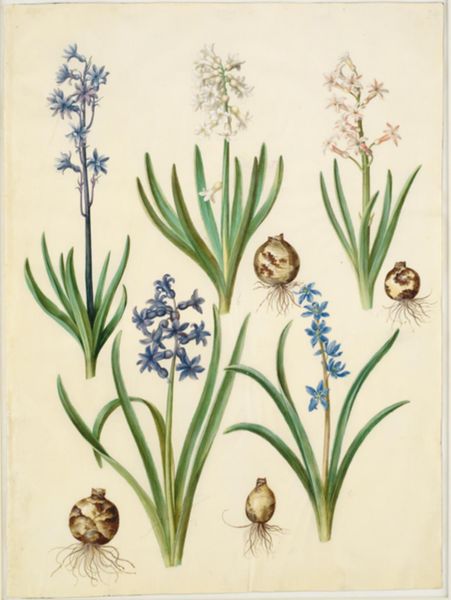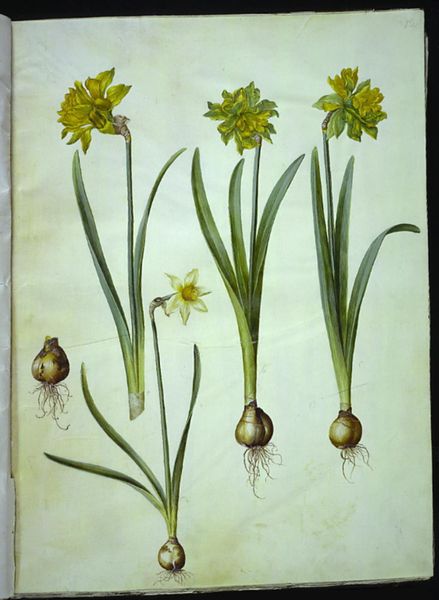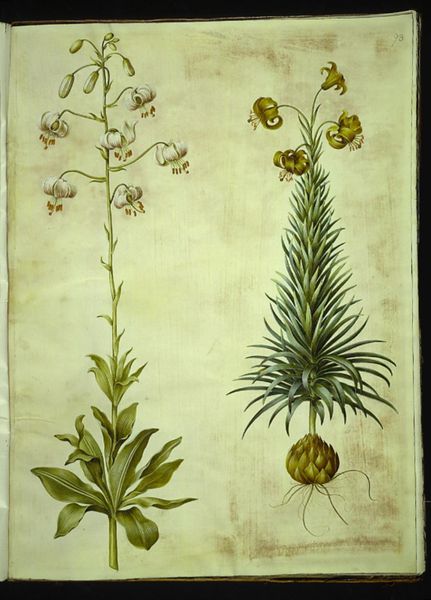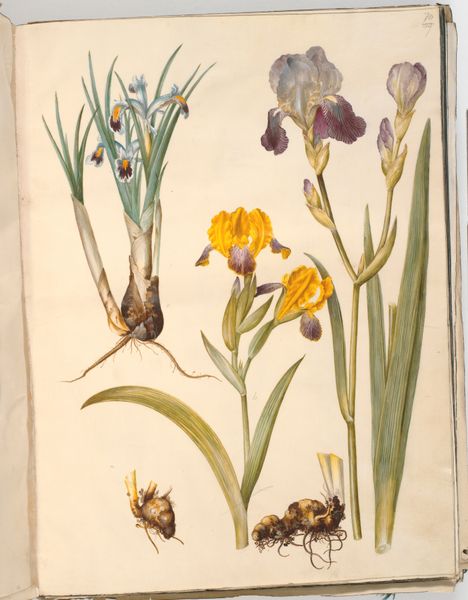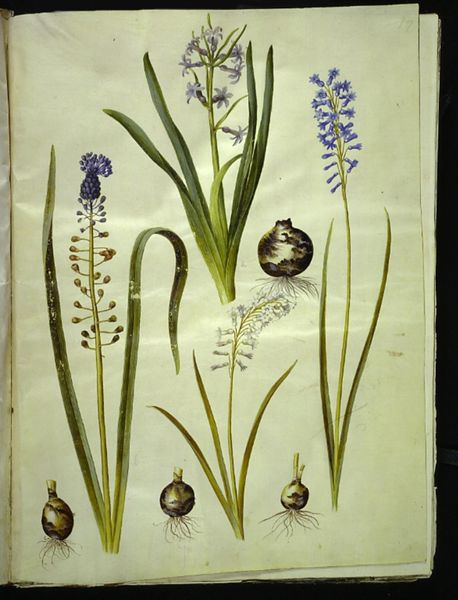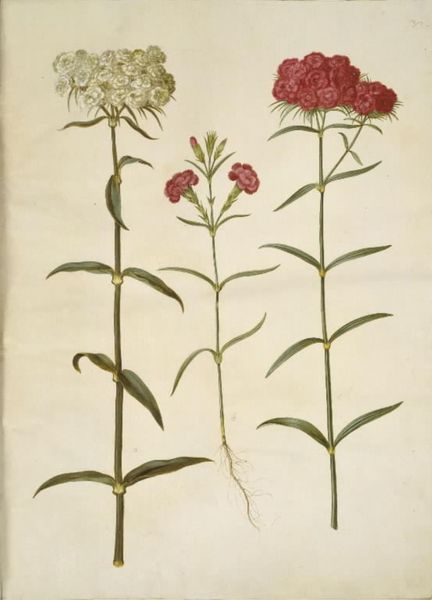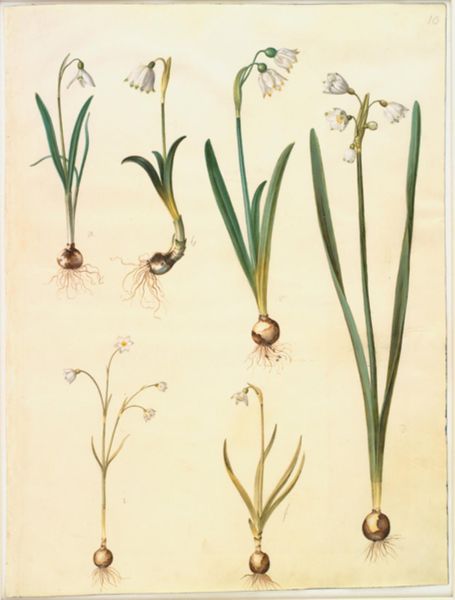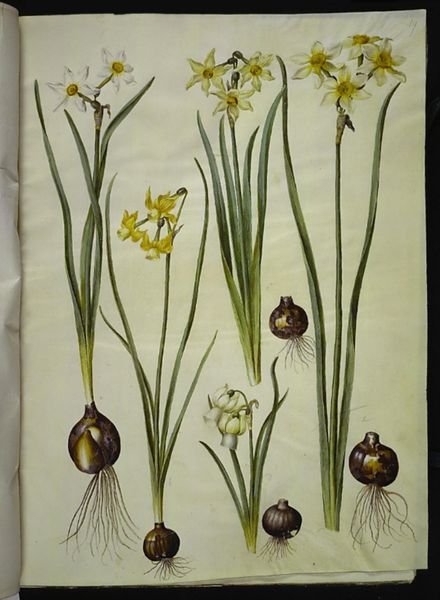
Ornithogalum umbellatum (kost-fuglemælk); Ornithogalum pyramidale (pyramide-fuglemælk); Gagea lutea (almindelig guldstjerne); Ornithogalum nutans (nikkende fuglemælk) 1649 - 1659
0:00
0:00
drawing, gouache, paper, watercolor
#
drawing
#
water colours
#
gouache
#
paper
#
11_renaissance
#
watercolor
#
watercolor
Dimensions: 505 mm (height) x 385 mm (width) (bladmaal)
Curator: Ah, there’s something so calming about this page. It’s like a botanical breath of fresh air. Editor: I agree! There's an inherent quietude. I almost want to whisper in its presence. A symphony of greens and whites... Curator: You're intuiting it perfectly! What we're observing here is a sheet of botanical studies by Hans Simon Holtzbecker, active in mid-17th century Denmark. It dates to between 1649 and 1659. Holtzbecker was court painter, and created volumes documenting the floral splendor of the gardens. This work features four specimens painted with watercolor and gouache on paper. Editor: It’s really the rendering that pulls you in; look how delicately Holtzbecker captured the transparency of the petals, how accurately the plant structures are laid bare... did these collections serve more of a symbolic purpose or an archival one at the time? Curator: I am glad you asked! While clearly possessing significant artistic merit, remember that Holtzbecker’s renderings existed within a context of growing scientific and imperial ambition. Detailed records of flora and fauna functioned simultaneously as demonstrations of knowledge, instruments of control, and celebrations of nature's opulence—often appropriated and commodified within colonial projects. Editor: Right. It makes you wonder whose knowledge and perspective were centered in defining the beauty of each flower; you see how each stem seems intentionally centered to fully showcase its key features. Were other forms seen as flaws in a sense? It’s fascinating, if not complicated... What do these varieties symbolize, anyway? Curator: Well, that’s fascinatingly difficult to pinpoint with certainty without more textual evidence. The individual flowers represented are Ornithogalum umbellatum, Ornithogalum pyramidale, Gagea lutea, and Ornithogalum nutans… the names alone become quite a mouthful. Though each carries different local names—like Star-of-Bethlehem—these species are linked across regions with rebirth and spring's gentle awakening. Editor: So beautiful. In viewing this image, and considering the power structures influencing Holtzbecker’s choices, I’m prompted to embrace imperfection—allowing the wild and uncultivated aspects of myself to thrive. To become aware and sensitive of not just beauty for decorative consumption but for mindful reflection as well. Curator: An empowering perspective indeed. I'm left pondering on the evolving relationship between humanity, nature, and artistic interpretation and how that continues to shap our present!
Comments
No comments
Be the first to comment and join the conversation on the ultimate creative platform.
